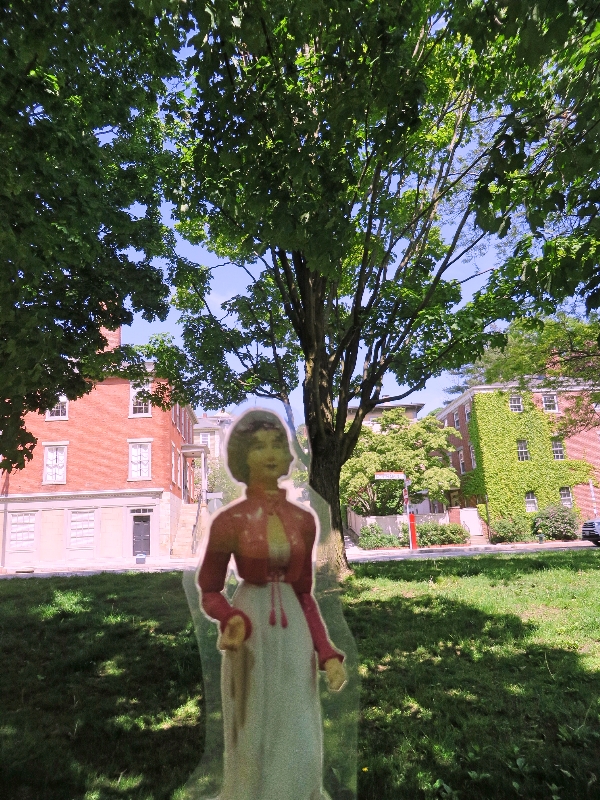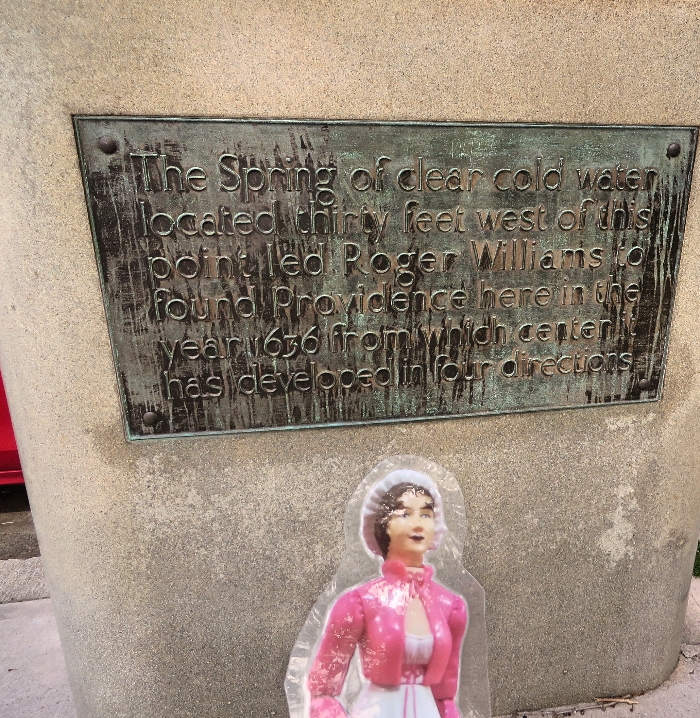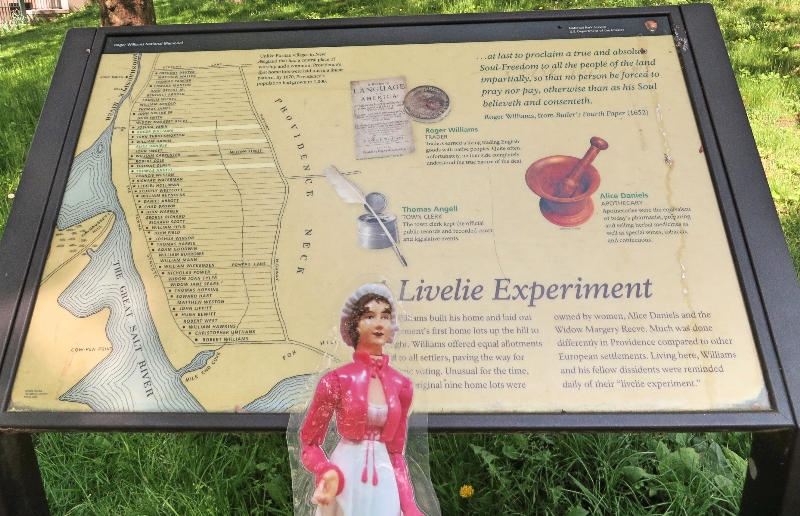Flat Jane in Providence : In which Jane learns of the early history of Providence
My dearest friends,
This journey has been quite enlightening so far. I do not know what to think about this concept of soul liberty. 'Tis very different from England where most of us belong to the established church. While I contemplate the place of dissenters in society, my hosts show me the original settlement of Providence.
This journey has been quite enlightening so far. I do not know what to think about this concept of soul liberty. 'Tis very different from England where most of us belong to the established church. While I contemplate the place of dissenters in society, my hosts show me the original settlement of Providence.
The Natives had a highway from Massachusetts Bay Colony to New York along the coast, the English named Towne Street. The West side of Towne street featured a freshwater spring that emptied into the Great Salt Cove. Mr. Williams built his house across from the spring.
 |
| On this spot was the wellspring |
 |
| Jane had to look into the future to see this monument, properly known as the Hahn Memorial (1931-1933) |
Other settlers soon followed and house lots stretched from the Great Salt Cove, over Towne Street and up the hill. Each settler received 6 acres of land, ensuring equality for all.
 |
| The house lots marched uphill behind me |
Roger Williams was buried on his property in 1683. I predict one day they will dig him up to build a memorial and his bones will be ashes to dust. Susanna thinks an apple tree root will eat his body! How droll! (Editor's note: Susanna time travels so she is aware of the story of the root that ate Roger Williams!)
This colony lacked an official authorized church and so Providence was not designed around a central church or meeting house, like those ghastly Puritans did in Massachusetts. The people worshipped outside or in each other’s homes. I can scarce credit these dangerous and radical ideas!
The timber frame homes, known as stone enders, were made from local materials. The people resided in these primitive one to two story cottages with one room per floor, a large stone chimney and fireplace at one end. They say the winters here are harsh and this type of cottage well protected the English settlers from the elements.
Later they built proper wood frame homes such as this one.
 |
| The Antram-Gray House c. 1730 + later addition |
The Antram-Gray House has seen a great deal of history already in just 100 years. It will see many more changes in future.
 |
| Jane: Providence has grown a great deal in nearly 200 years! |
Every home had gardens: a good English kitchen garden, a native garden growing maize, beans and squash (which the Indians call the "Three Sisters") and here I see a garden of plants native to Rhode Island. They must keep bees somewhere too.
I have much to tell you. My pen fairly flies across the page. I must leave off for now but remain
yours affectionately,
J.A.
Editor's Note: Flat Jane would like to acknowledge the Narragansett Indians on whose land the Roger Williams National Memorial now stands. She would also like to thank the National Park Service for their informative signs and website.










No comments:
Post a Comment